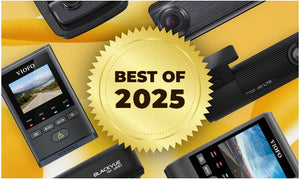Off-roadsters — off-road trucks and SUVs with removable roofs — offer a unique mix of an open-air motoring experience and go-anywhere capabilities. However, you might encounter issues when installing a dash cam in one of these vehicles, such as the Ford Bronco, Jeep Gladiator, and Jeep Wrangler. We have received many inquiries about these, from our customers who want to equip their off-roadsters with dual-channel dash cam systems.
In this article, we will cover some common installation issues we encounter with off-roadsters, explain different ways to work around them, and share a few tips and tricks to ensure you’re well-protected both on and off the pavement.

